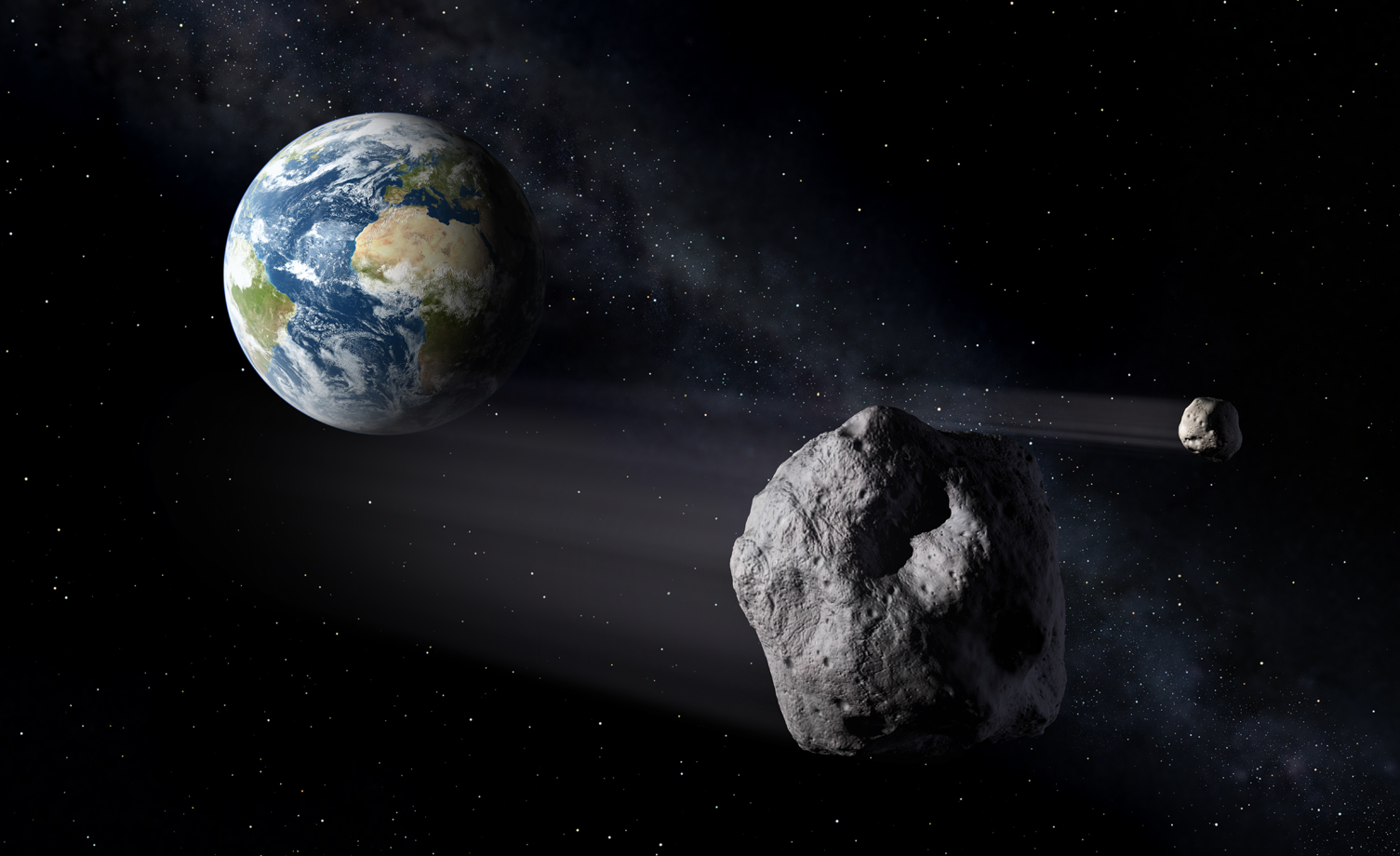Four Asteroids Are Buzzing Earth in Flybys Today (But Don't Worry)
Three of them were discovered within the last 24 hours.

At least four potentially hazardous asteroids are making close approaches to Earth today (Oct. 1). Though the space rocks won't be near enough to our planet to cause any harm, three of the asteroids were discovered just hours before whizzing by the Earth-moon system — not much time to prepare for an emergency response had they been in fact on a collision course.
Asteroid 2019 SM8 was discovered by astronomers at the Mount Lemmon Observatory in Arizona on Monday (Sept. 30) and flew by Earth today at approximately 9:56 a.m. EDT (1356 GMT), according to NASA. At its closest, it was about 99,000 miles (159,000 kilometers) from Earth, or slightly less than half the average distance between Earth and the moon. NASA estimated that this asteroid is about 16 feet (4.8 meters) in diameter, about the size of an SUV.
Just over an hour later, another newly discovered asteroid made a close approach to Earth, but this one kept a bit more distance. Asteroid 2019 SE8 was also first discovered at Mount Lemmon just a few hours before it made its closest approach to Earth on Oct. 1 at approximately 11:12 a.m. EDT (1512 GMT). At its closest, the asteroid was about 674,000 miles (1.1 million kilometers) from Earth. That's nearly three times the average Earth-moon distance, so this rock didn't pose much of a threat. Asteroid 019 SE8 is a bit bigger than the last asteroid, and NASA estimates that it's about 47 feet (14 meters) across.
Related: Potentially Dangerous Asteroids (Images)
Video: SUV-Sized Asteroid Skims By Earth - Orbit Animation
Later tonight, yet another newfound asteroid, 2019 SD8, will pass about 331,000 miles (532,000 km) from Earth at 10:29 p.m. EDT (0229 GMT on Oct. 2). This space rock was found by the Catalina Sky Survey in Tucson, Arizona, also just a day before its close approach to Earth. At about 38 feet (12 m) wide, it's the size of a city bus.
Asteroid 2018 FK5 is the only known asteroid flying by Earth today that NASA already knew about long before its arrival. This rock is also the most distant one: passing more than 3 million miles (5 million km) from Earth tonight at 6:56 p.m. EDT (2256 GMT). Astronomers at Mt. Lemmon discovered this 24-foot-wide (7 m) asteroid just two days before it flew by Earth in March 2018.
Though none of these asteroids had much of a chance of hitting Earth today, NASA still classifies them as "potentially hazardous asteroids" because the rocks could still pose a threat in the future when their orbits intersect with Earth's again. NASA and other institutions around the world are actively scanning the skies for dangerous asteroids, working on ways to stop an asteroid in its tracks, and coming up with an emergency response plan– all to help Earth be more prepared for asteroid threats.
Get the Space.com Newsletter
Breaking space news, the latest updates on rocket launches, skywatching events and more!
- The Hunt for Dangerous Asteroids: Here's How Scientists Do It
- Incoming! How NASA and FEMA Would Respond to an Asteroid Threat
- About 17,000 Big Near-Earth Asteroids Remain Undetected: How NASA Could Spot Them
Email Hanneke Weitering at hweitering@space.com or follow her @hannekescience. Follow us on Twitter @Spacedotcom and on Facebook.

Join our Space Forums to keep talking space on the latest missions, night sky and more! And if you have a news tip, correction or comment, let us know at: community@space.com.

Hanneke Weitering is a multimedia journalist in the Pacific Northwest reporting on the future of aviation at FutureFlight.aero and Aviation International News and was previously the Editor for Spaceflight and Astronomy news here at Space.com. As an editor with over 10 years of experience in science journalism she has previously written for Scholastic Classroom Magazines, MedPage Today and The Joint Institute for Computational Sciences at Oak Ridge National Laboratory. After studying physics at the University of Tennessee in her hometown of Knoxville, she earned her graduate degree in Science, Health and Environmental Reporting (SHERP) from New York University. Hanneke joined the Space.com team in 2016 as a staff writer and producer, covering topics including spaceflight and astronomy. She currently lives in Seattle, home of the Space Needle, with her cat and two snakes. In her spare time, Hanneke enjoys exploring the Rocky Mountains, basking in nature and looking for dark skies to gaze at the cosmos.









